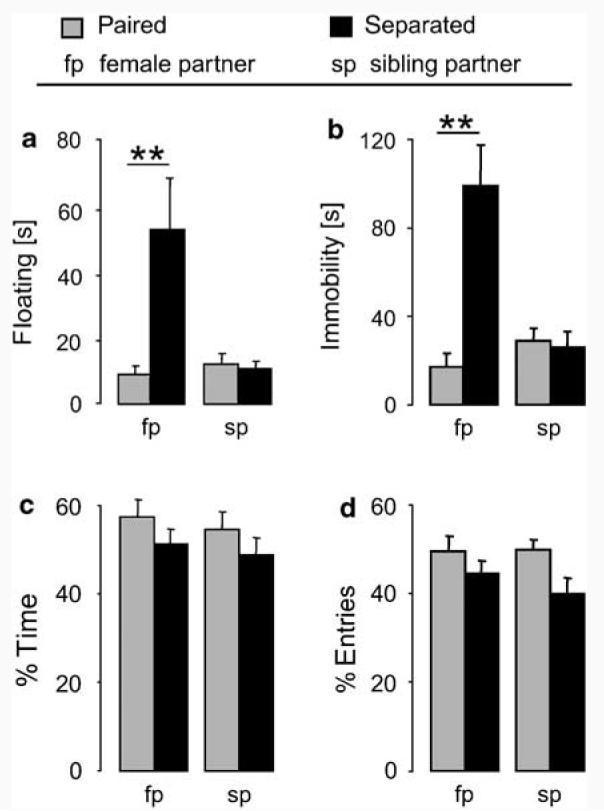Figure 2.

Effect of partner separation on passive stress-coping behavior in (a) the forced swim test and (b) the tail suspension test as well as (c, d) anxiety-like behavior on the elevated plus-maze. Male voles were paired for 5 days with a female (fp) or male sibling (sp). Half of the males were then separated from their cage-mate (black bars) whereas the remaining half remained pair housed (grey bars) for 4–5 days before behavioral testing (from Experiment A (a, b) or Experiment B (c, d; see Figure 1 for details). Passive stress-coping behavior is reflected as the amount of time the animal spends inactive, ie floating (a) or immobile (b). Anxiety-like behavior is reflected as percentage of time spent in and percentage of entries into the open arms vs all arms (c, d). Numbers of animals included in the statistics were (a) female partner: n=9 in each group; sibling partner: n=10 in each group; (b) female partner: n=9 in each group; sibling partner paired: n=9; separated: n=10; (c, d) female partner paired: n=10; separated: n=12; sibling partner: n=12 in each group. Data are expressed as mean + SEM. **p<0.01 vs all other groups.
